Text
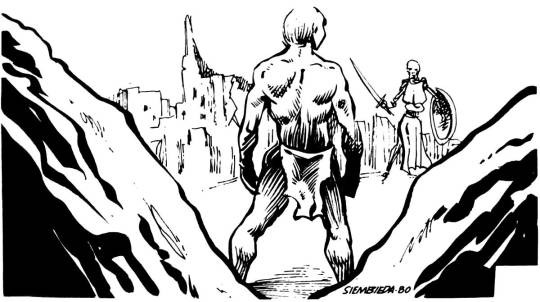
When you roll randomly for your new character's starting gold sometimes you cant afford all the gear you want at 1st level (Kevin Siembieda, Tarantis, D&D campaign supplement in the Wilderlands of High Fantasy, Judges Guild, 1983)
#D&D#Dungeons & Dragons#dnd#Dungeons and Dragons#old school d&d#old school renaissance#osr#old school revival
106 notes
·
View notes
Text
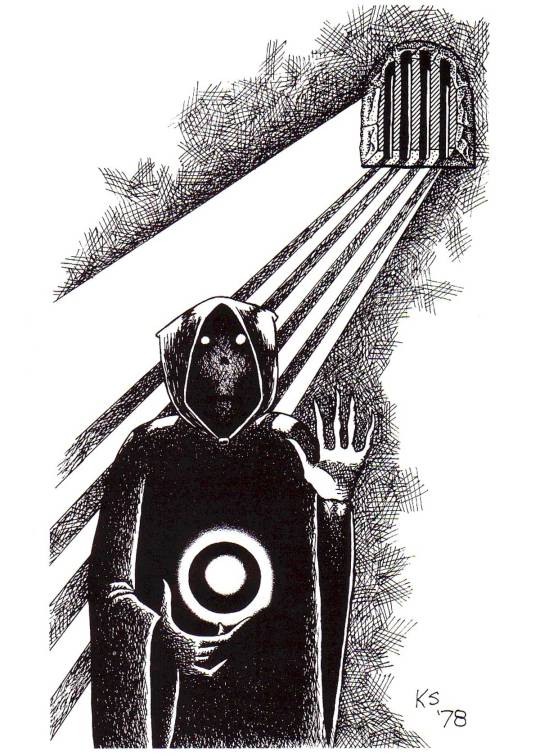
Welcome to the dungeon (Kevin Shaughnessy, The Space Gamer 21, Metagaming, Jan/Feb 1979)
401 notes
·
View notes
Text

Hey, you! Here are 12 old school dungeon ideas inspired by In Search of the Unknown, a classic D&D adventure.
🐉 For more ideas, check out the full article →
#osr#d&d#art#dungeons & dragons#dnd#b/x#dungeons and dragons#old school renaissance#game design#gygax
60 notes
·
View notes
Text

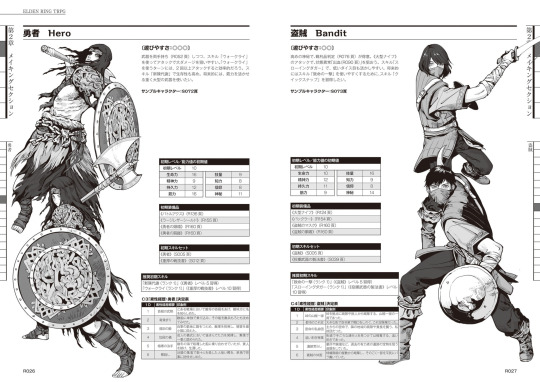





character class spreads from the official elden ring tabletop rpg, including a mixture of original art for existing classes and new art for classes exclusive to the rpg. i don't think these have been circulated much in english-speaking fan circles, if at all. i'll post cleaned versions of the character art at a later date.
618 notes
·
View notes
Text
Reblogging after reading Jason Tocci's recent armor post.

An Alternative Rule for Armor
As a design exercise, I've been messing around with a tabletop RPG of Skyrim. It's been really productive to get away from my preferences (d20, a few good rules, story-focused) into stranger design territory (d100, no attributes, many skills).
Along the way, I got thinking about a rule for Armor—
Armor Pool
You have a pool of HP and a pool of Armor. When you take damage, you lose Armor. If your Armor is 0, you lose HP.
Some damage— like critical hits, fire, and magic— bypass your Armor and you lose HP directly.
During a rest, you can recover HP. But your Armor can only be repaired in a settlement.
I like this because it's piecemeal, degrades, and dead simple to track. It also gives Players another reason to leave the dungeon (or wilderness) and visit town.
This idea is new to me, but I'm curious what systems already use it. Let me know in the comments.
11 notes
·
View notes
Text
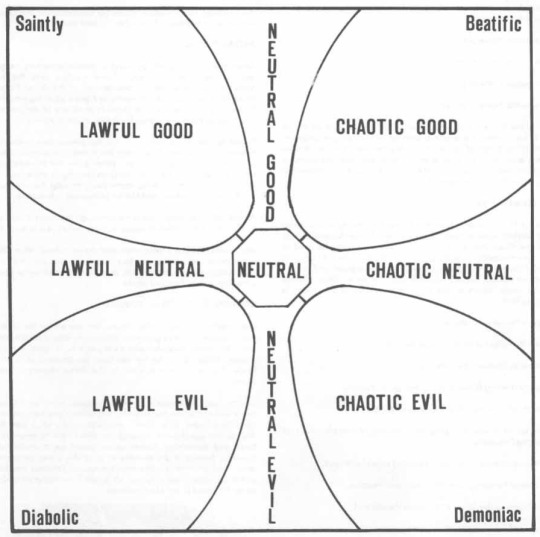
Character Alignment Graph from the Advanced Dungeons & Dragons Players Handbook (1978).
Chaotic Evil: The major precepts of this alignment are freedom, randomness, and woe. Laws and order, kindness, and good deeds are disdained. life has no value. By promoting chaos and evil, those of this alignment hope to bring themselves to positions of power, glory, and prestige in a system ruled by individual caprice and their own whims.
Chaotic Good: While creatures of this alignment view freedom and the randomness of action as ultimate truths, they likewise place value on life and the welfare of each individual. Respect for individualism is also great. By promoting the gods of chaotic good, characters of this alignment seek to spread their values throughout the world.
Chaotic Neutral: Above respect for life and good, or disregard for life and promotion of evil, the chaotic neutral places randomness and disorder. Good and evil are complimentary balance arms. Neither are preferred, nor must either prevail, for ultimate chaos would then suffer.
Lawful Evil: Creatures of this alignment are great respecters of laws and strict order, but life, beauty, truth, freedom and the like are held as valueless, or at least scorned. By adhering to stringent discipline, those of lawful evil alignment hope to impose their yoke upon the world.
Lawful Good: While as strict in their prosecution of law and order, characters of lawful good alignment follow these precepts to improve the common weal. Certain freedoms must, of course, be sacrificed in order to bring order; but truth is of highest value, and life and beauty of great importance. The benefits of this society are to be brought to all.
Lawful Neutral: Those of this alignment view regulation as all-important, taking a middle road betwixt evil and good. This is because the ultimate harmony of the world -and the whole of the universe lawful neutral creatures to have its sole hope rest upon law and order. Evil or good are immaterial beside the determined purpose of bringing all to predictability and regulation.
Neutral Evil: The neutral evil creature views law and chaos as unnecessary considerations, for pure evil is all-in-all. Either might be used, but both are disdained as foolish clutter useless in eventually bringing maximum evilness to the world.
Neutral Good: Unlike those directly opposite them (neutral evil) in alignment, creatures of neutral good believe that there must be some regulation in combination with freedoms if the best is to be brought to the world — the most beneficial condition for living things in general and intelligent creatures in particular.
True Neutral: The "true" neutral looks upon all other alignments as facets of the system of things. Thus, each aspect — evil and good, chaos and law — of things must be retained in balance to maintain the status quo; for things as they are cannot be improved except temporarily. Nature will prevail and keep things as they were meant to be, provided the "wheel" surrounding the hub of nature does not become unbalanced due to the work of unnatural forces, such as human and intelligent creatures interfering with what is meant to be.
7 notes
·
View notes
Text
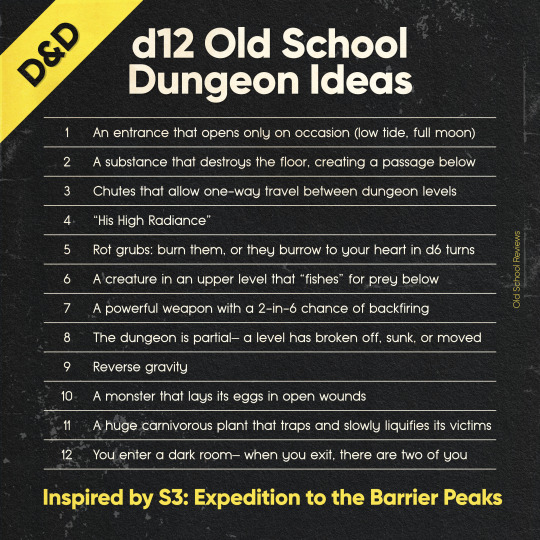
Hey, you! Here are 12 old school dungeon ideas inspired by Expedition to the Barrier Peaks, an old-school adventure published in 1980.
#osr#d&d#art#dungeons & dragons#dnd#b/x#dungeons and dragons#old school renaissance#game design#gygax
118 notes
·
View notes
Text




Illustrations from module S3: Expedition to the Barrier Peaks (1980).
#d&d#osr#art#dnd#dungeons & dragons#b/x#dungeons and dragons#old school renaissance#game design#gygax
26 notes
·
View notes
Text

Demonsblood, issue 6, January 1980, with Oleg Zacharov’s cover art. Demonsblood was a mostly D&D-focused fanzine in the UK, publishing 7 issues in 1979-80.
246 notes
·
View notes
Text

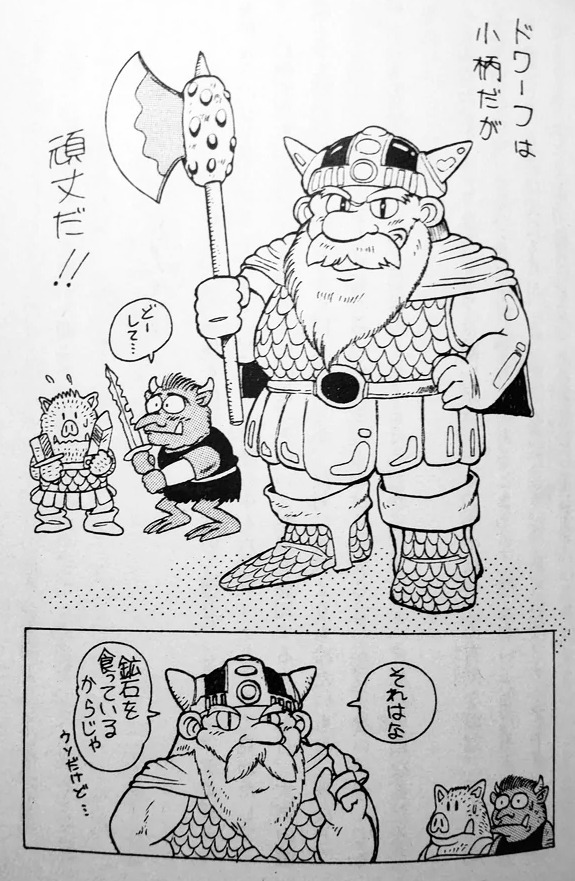

Class illustrations of the elf, dwarf, and halfling from a Japanese edition of B/X.
Translations by u/merurunrun:
Elf Elves: Can fight. Can cast spells. Are smart. Are long-lived. ...but good god do they level up slowly.
Dwarf Dwarves are short...but tough! "How...?" "You see...it's because we eat rocks." (That was a lie.)
Halfling Halflings are hard to hit. But as far as I'm concerned, without strength, dexterity, or constitution, they're worthless. "Hi-ho!"
#osr#d&d#dungeons & dragons#dnd#b/x#dungeons and dragons#old school renaissance#dnd art#old school revival#old school d&d#gygax
77 notes
·
View notes
Text

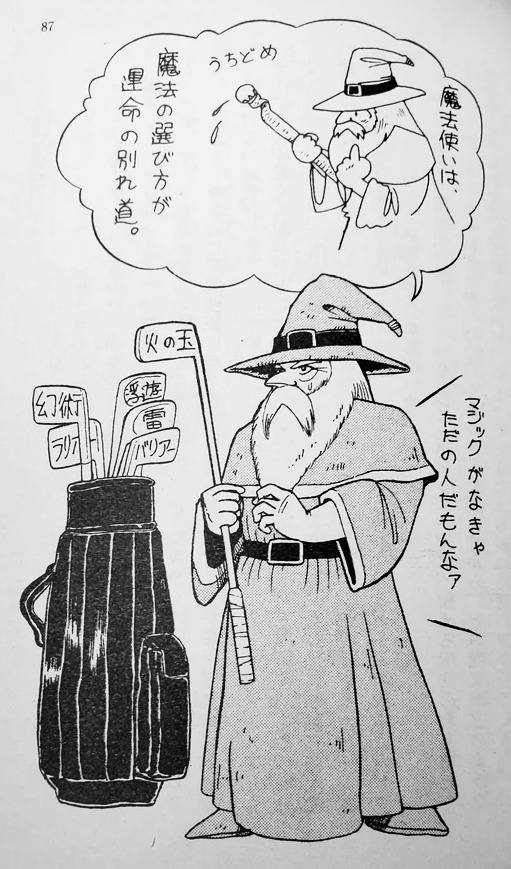


Illustrations of the fighter, magic user, cleric, and thief from a Japanese edition of D&D B/X.
Translations by u/merurunrun:
Fighter The fighter is the superstar of D&D!! ...but he's not very smart. "Hey! Do your damn job!"
Magic User Your choice of spells form a dramatic crossroads. Without magic, you're just some guy. (The golf clubs say Fireball, Levitate, Lightning, Barrier, Illusion, and "Raria" (possibly lasso? not sure))
Cleric The cleric can't use edged weapons... "I'm pretty sure shaving is fine." (The sigh says "No Edged Weapons") ...but they do have the power to protect the party from wounds and the undead.
Thief The nimble thief is like a magnet for treasure... ...and they're the quickest to level up. "One day I'm going to run my own guild."
#osr#d&d#dungeons & dragons#dnd#b/x#dungeons and dragons#old school renaissance#dnd art#old school revival#old school d&d#gygax
25 notes
·
View notes
Text







Class illustrations from the Japanese D&D Rules Cyclopedia (1994) From top left: Fighter, Magic-user, Thief, Cleric, Halfling, Dwarf, Elf
#osr#d&d#dungeons & dragons#dnd#dnd art#old school d&d#old school renaissance#old school revival#dungeons and dragons#b/x#gary gygax#gygax
32 notes
·
View notes
Text

Equipment list from the Japanese-edition of Rules Cyclopedia (1994)
#osr#d&d#art#dnd#b/x#old school renaissance#dungeons and dragons#dungeons & dragons#dnd art#gygax#old school revival
10 notes
·
View notes
Text
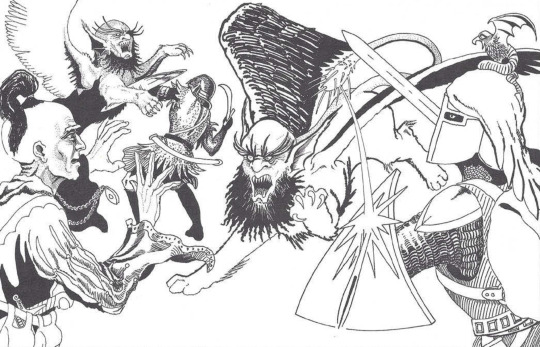
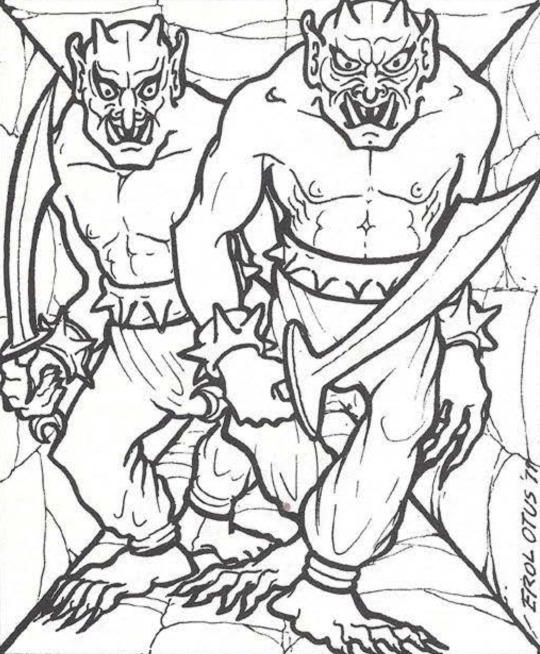


Illustrations from module S2: White Plume Mountain (1979).
#osr#old school d&d#d&d#art#dnd#dungeons & dragons#b/x#dungeons and dragons#old school renaissance#gygax#severed hand#old school reviews
3 notes
·
View notes
Text
My Favorite OSR Links [Updated]
Resources
A list of OSR keystones by Traverse Fantasy.
A comparison of OSR systems by Leyline Press.
100 OSR systems and adventures by FigCat.
How to run a hexcrawl, a short blog post and long video.
Game Design
Variations on leveling up by Sean McCoy (Mothership).
Rolling partial successes with a d20 by Jason Tocci (2400).
The Underworld Clock, a procedure for adding suspense and urgency to your dungeons by Arnold K (GLOG).
Blogs
Failure Tolerated by Sean McCoy (Mothership).
Bastionland by Chris McDowall (Into the Odd).
A few of the best blog posts of 2022.
Monsters
A sprawling compendium of international folk monsters.
Creating set-piece boss monsters that players have to solve before they can kill.
Making horrifying monsters encounters with description, not mechanics.
Infusing monsters with myth and Medieval-weirdness.
Using slow actions to create a deadly Souls-like experience.
Combat
Diceless violence using HP-as-a-resource.
Executing combat maneuvers and called shots, also using HP-as-a-resource.
Using Mettle, Trauma, and Grit as a replacement for HP.
Accelerating combat by skipping “to-hit” rolls.
Story
Using powerful or cursed weapons as characters and motivators.
A soothsayer who can learn a truth from the DM. But if the Player relays the truth specifically, it changes.
Graphic Design
A primer on text formatting.
A list of classic D&D fonts.
Into the Odd Remastered, an exhibit.
Culture
A summary of the six cultures of play.
Adventures
Distilling adventures into one dynamic scene.
A repository of every One Page Dungeon submission, 2009 to present.
19 notes
·
View notes
Text

Hot off the press: old school dungeon ideas inspired by S2: White Plume Mountain.
#osr#old school d&d#old school renaissance#old school revival#d&d#dungeons and dragons#gary gygax#gygax#tabletop rpg
84 notes
·
View notes
Text
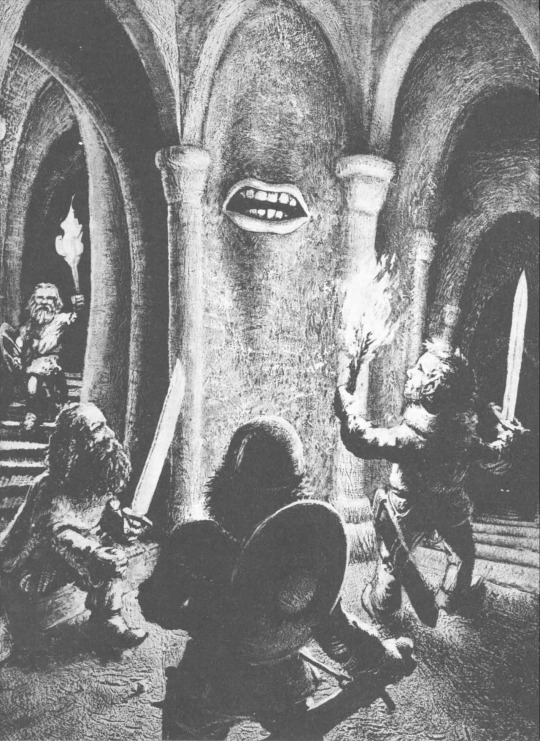
Magic Mouth (Spell): An enchanted mouth suddenly appears and speaks a message... If placed upon a statue, the mouth of the statue moves. Material component: a bit of honeycomb.
Classic illustration from the Advanced D&D Player's Handbook (1978).
14 notes
·
View notes